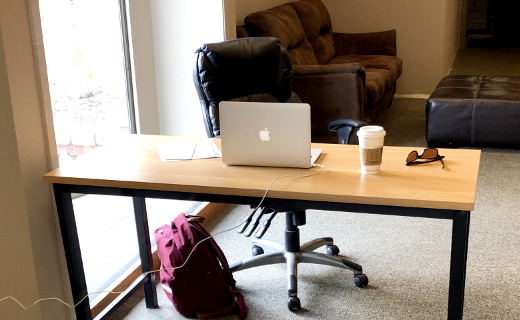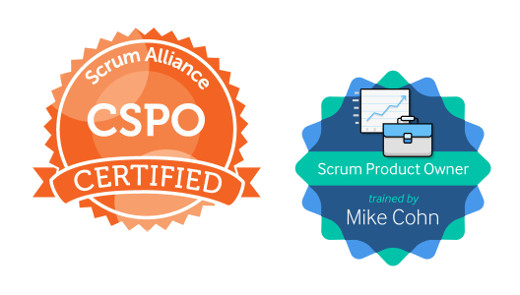Thoughts on Writing 1000 Blog Posts

My last post at The Hot Iron, Lower the Minimum Age to Work, was the one-thousandth post I have written for my blog over the almost 15 years since I started it.
I say that calls for acknowledgment and some reflection.
Where It Began
Over the years I have often mentioned why I started and have continued this blog. In short, I had a client of my Web business who asked me to stop building them a Web site and build them a blog first using specific software. After building theirs, I realized I had no “showcase” blog to use as an example to future clients. I had registered the domain name thehotiron.com years earlier, as I thought a play on “strike while the iron is hot” was a good name for a blog. At the end of 2006, what you are reading this from was born.
I slowly got into writing, namely as I wasn’t much of a writer previously. Some posts were things on my mind, others were on what was bugging me, and others were a way to promote myself and my business. Types of posts emerged over the years, such as mobile phone evaluations, book takeaways and What I Learned for the previous week. No matter what I wrote, I tried to contribute something unique to the global conversation. Looking back on random posts as I am writing this, I think I did a good job at keeping to this mission.
1,000 Could Have Been Sooner, Thanks Social Media
There’s no doubt on the impact on social media in the world. A little closer to home, it certainly impacted what and how often I wrote on my blog. Something that was bugging me could easily be boiled down to 120 characters in a Tweet or a little longer in a Facebook post. Over time however those social accounts have gone away or ground down to a halt, as I have preferred to write in longer form in a platform I control. Am I anti-social? No – I certainly do share links on social media to my blog posts. However it’s nice to have my collection of written thoughts in one place, making The Hot Iron the center of my digital presence – something I have written about before and will continue to in the future. Judging by the little bit of observing I do of hits to the blog, others do find me here and keep coming back.
What’s Next
A grand of posts down, another to go? We’ll see, as I stopped making predictions here a long time ago. A little celebration to go along with this reflection... now that’s something that will happen for certain.
This is from The Hot Iron, a journal on business and technology by Mike Maddaloni.
Did you enjoy this? Subscribe to The Hot Iron by RSS/XML feed or Read by Email
Announcements • Blogging • Thrive • (3) Comments • PermalinkMike Maddaloni Is A Certified Scrum Product Owner
Another timeout for a little self-promotion as I am proud to announce I am now a Certified Scrum Product Owner, or CSPO. A week ago I took a 2-day course and in the process gained certification through Scrum Alliance.
What is a CSPO?
A CSPO is a practitioner of the Scrum. With its origins in software development, Scrum is “framework within which people can address complex adaptive problems, while productively and creatively delivering products of the highest possible value.” A product owner is one of 3 roles on a Scrum team, along with the Scrum Master and Developers. The team delivers software, or whatever the work product is, in an iterative approach over periods of time called sprints, where a sprint can last a few weeks to a month. You can read more on Scrum in the Scrum Guide the “bible” on the framework.The role of the Product Owner is an empowered representative of the stakeholders for the product the entire Scrum team is working on. Its mission is to maximize the value of the product for said stakeholders and its users. High-level responsibilities include defining the Product Goal, managing the Product Backlog (or what the team will be working on), communicating and ensuring transparency.
Why the Product Owner Course? And didn’t you take the Scrum Master course?
Last year I took the course and exam to become a Certified ScrumMaster through Scrum Alliance. Through this process, I was really intrigued by the Product Owner role. In my current job, in many regards I serve as a Product Owner more than I do a Scrum Master. Also, I found a lot more emphasis on the Scrum Master role on the Scrum team “out there” more than I did on the Product Owner. This led me to pursue this course of study and serve in this capacity. Even had I not had this strong interest in being a Product Owner, I feel it important to understand all of the Scrum team roles to better serve as one of them.
The Course Itself
Before the global lockdowns last year, Scrum courses were never taught remotely. You would take a course near you or travel to take one in person. The Scrum Master course I took last year was virtual, though I had signed up for it as an in-person course originally. I was pleased with the last-minute pivot, the instructor and learned a lot from it.
All Scrum trainers have since gone to a virtual model. Where some courses are now starting to be taught in person, the majority are still online. This opened wide the possibilities from where to take the course. As I chose to continue courses through Scrum Alliance, I took the CSPO course through Mike Cohn, a veteran Scrum practitioner, trainer and author.Where I have only taken a few courses online over the years, this was by far the best offering I have experienced. The online “space” is integrated into Agile Mentors, a community and resource center whose membership is included for a year with the course. Before the live sessions, there was about 4 hours of “basics” videos going over the core of the Product Owner role, including quizzes throughout. It was structured this way to ensure to maximize the 2 days of live instruction, and it worked very well. I was equally impressed with the design of the overall experience – Cohn and his Mountain Goat Software spent a considerable amount of time in the branding and technology for this and all of their products.
No exam?
At the lunch break during the first day of the course it dawned on me there was no mention of an exam following the course to earn the certification. During the Q&A at the end of the day I asked this “meta” question. A good discussion followed and Cohn went into great detail on it from his own experience – he was a founder of the Scrum Alliance, and he said for this role it is a challenge to create questions for such an exam, as he has tried himself. Cohn’s upfront and no-nonsense approach was also a selling point for me on training with him. The non-binding quizzes throughout the pre-course videos did help in reinforcing the materials.
Without an exam and by actively participating in the course, this is the only qualification for the CSPO certification. Where I felt it was a little anticlimactic, I have decided it will be up to me to challenge myself as a Product Owner and always quiz myself. But what a better challenge for Scrum Alliance to develop an exam for this certification!
Next Steps and Kudos
I am looking forward to my continued journey with Scrum, the better way to do things – just ask Elon Musk! I have been asked my employer to help emphasize and further the Product Owner role, and I am up to the task. I also welcome your questions on Scrum in general. If you are thinking of studying for it as I did, I highly recommend the course from Mike Cohn. Thanks to him, Stacey Ackerman of the Agile Mentors community and the numerous classmates I had from around the area and the world who made the CSPO course a memorable experience.
This is from The Hot Iron, a journal on business and technology by Mike Maddaloni.
Did you enjoy this? Subscribe to The Hot Iron by RSS/XML feed or Read by Email
Announcements • Business • Agile / Scrum • Thrive • (0) Comments • PermalinkBe Part Of The Solution If You Can

For years I’d often say, “I want to be part of the solution and not part of the problem.” This came to be as I’d get into a situation where all I was doing was complaining about it. By removing myself from the chaos in the middle of things to think – perhaps taking a walk along a lake – hopefully I could come back with a way to make a situation better all around. If it takes me to be directly involved and it could to be beneficial to me as well, then I will commit to it.
Over time, however, I have revised that statement to the following, “I want to be part of the solution if I can.”
There’s a few differences from the initial statement above. First, I am removing the declaration there is a problem. Am I in denial here? Not necessarily. In that original statement I (emphasis: me) am saying there is a problem. The fact of the matter is that I (emphasis: me, again) may be the only person who thinks there is a problem!
This has come from experiences where I get involved in something, providing a fresh point-of-view on it and perceive an issue or problem. Note there may well be a problem, but if the consensus of the overall group or community that I have recently joined doesn’t see it that way, or simply thinks things are just fine, then trying to highlight an issue or trying to help solve one may be futile.
Learning the Best Way – The Hard Way
A recent example highlights this. I answered a call to volunteer for an organization I was already a member of to help in live-streaming their meetings. They have already been doing this for a while, but needed more people to help. The idea of this sounded fun and I signed up. The training on live-streaming was in real-time – I and another person observed someone who had set this process up execute on it, all the while following some brief instructions. It was a good thing I brought a notebook as I took several pages of notes above and beyond the instructions. Armed with what was provided and what I wrote, I was ready to take on this task by myself. Or so I thought.
When it came for my first solo live-stream, I followed the instructions to the letter, weaving in my own notes, and thought all was well. When I went to test to see if it was actually streaming (something from my own notes) I found it wasn’t. Panic washed over me as I am sitting here thinking all is working while people are trying to connect to a live-stream that isn’t there! I tried troubleshooting the process, challenging as I didn’t know all I didn’t know, and found that a required field wasn’t filled in, and when I filled it in, the stream started. Twenty minutes into the meeting, but started nonetheless.
Following this screw-up I sent an email to those involved and apologized, then offered to help improve the instructions. I got a response back saying this wasn’t necessary. However I felt it was – as someone who trains people regularly to manage their own Web sites, I felt this enhanced documentation, complete with photos and screenshots, was essential.
Despite the lack of response to my offer, when it was my next opportunity to volunteer, I was ready to further document this process. I started with a new document, bringing in the existing instructions and enhanced them with my notes. I then printed this and brought it with me so I could write in pen the remaining pieces. I also took pictures and captured screenshots along the way.
The only issue was the live-stream didn’t work again. It was a different problem from before, and I troubleshooted it the best I could, but I never got it working. I was furious, but needed to focus. As the video camera was recording the meeting, I knew that would be the Plan B and I would upload the video files later. I double-checked the camera to ensure it was still recording then went outside to get some fresh air, and perhaps to let out a scream or two. When I came back in I checked the camera and it had stopped recording. What? There was plenty of room to record, what could have happened? I resumed the recording, but a key piece of the meeting was never captured. I stewed in boiling water in my mind thru the rest of the meeting, then afterwards I resigned from this volunteer opportunity.
Why did I quit? I saw a need for more documentation, not to mention troubleshooting tips. But nobody else did. Plus I couldn’t put myself through another live-stream failure. Those in charge of this effort, however, felt things were fine. I even heard from the organization’s volunteer coordinator that live-stream issues happen all of the time, yet clearly nobody felt a need for improvement earlier. Where I wanted to be part of the solution, I felt it was a situation I didn’t want to be a part of, and as well I didn’t feel my participation was welcome either.
Unfortunately there have been other situations over the years where I have been in where there was a similar disconnect. I was not trying to impose “my way” rather wanted to make it better for myself, and what I later found out for others too. On the flip side, I have been involved in the past – and currently – in roles where I was able to be part of the solution. And with that I will end this as I need to work on one of those very volunteer roles.
Deconstructing Being Part of the Solution If You Can
Our time is precious, and if time spent contributes to a greater good then it is an overall ideal situation. However we are not mere robots doing a task – we have our ideas and past experiences, and many times we see a way to make a situation better, all the while making a win-win situation. However not everyone is open to that, and in those cases we need to determine if it’s the best use of our precious time, no matter how noble the cause is.
This is from The Hot Iron, a journal on business and technology by Mike Maddaloni.
Did you enjoy this? Subscribe to The Hot Iron by RSS/XML feed or Read by Email
Business • Strategize • Thrive • (0) Comments • PermalinkDomain Names Featured In My University Guest Lecture
I wonder how often domain names are taught at the university level.
This thought was in the back of my mind as I developed and gave a guest lecture in the Fall of 2020 to students of Dr. Sara Steffes Hanses at the University of Wisconsin – Oshkosh on consulting. I have had the honor to present to her classes in the past to share my wisdom and lessons learned over the years as a consultant – and how I think as a consultant even when I work for a firm. Where this lecture was virtual, my plan was to deliver it with the same enthusiasm as I have in the past.
The class I gave the guest lecture to is part of a program called Interactive Web Management, or IWM. It is a unique hybrid of business, technology, marketing and journalism, and students in the IWM program get a well-rounded education and experience across all that encompasses a Web site today. Especially in today’s world of hyper-specialization I see this program as a great way to offer the big picture, and allow graduates to choose their specialty or specialties.
Timing for my class was around the first meeting students have with their “clients,” non-profit or university organizations for whom they will consult to, which is the basis of their semester work. As I have given this guest lecture before, there are many elements that are continued. That being said, I fully re-evaluate it based on my own experience and the marketplace since the last lecture.
This is also why I introduced “extras” a few years ago – topics that were not core to the lecture but related and important nonetheless. For one of my extras this time, I chose domain names. If you have read anything else I have written here at The Hot Iron, you know I work a lot with domain names and have opinions and advice on them. I decided to cover domain names as an “extra” as many may have some familiarity with them, but not all aspects.
Two slides were dedicated to domain names, as you can see from the presentation linked and embedded. Where the bullet points were brief, there was a lot of substance I spoke to. As an introduction, I reaffirmed likely to all what a domain name is and how you can use it. I also talked about the selection of a name, giving an example of how one friend and former client, Foresight Childproofing, came up with their primary domain name, ChildProofHome.com. I then concluded this with talking about the various top-level domains, or TLDs, available, and recommended people have a great experience with working with domain names at Name.com.
As the first slide focused on registering a new, available domain name, I could have stopped there and felt good about the knowledge I shared. However I decided to go deeper and explore with them the world of the domain name aftermarket – when a domain name you desire is already registered and is available for registration at a premium price from a broker. I feel if people know very little about domain names in general, they are completely clueless about the aftermarket. Here I described what it is, and shared stories of how I acquired domain names from the aftermarket for clients in the past. I also recommended they explore DomainMarket.com, a larger and reputable marketplace.
I have shared the slides to my guest lecture here for all to review and “leverage” for their own use on SlideShare, whether for work, academia or personal use.
Deconstructing Educating on Domain Names
There’s no time like the present for a teaching moment. As a guest lecturer, it is your role to contribute something unique to the class – whether it’s a unique topic or point-of-view. Bringing a heightened awareness of domain names to this class was my way of offering both. Did it resonate with the students? I can’t say for sure, as most had their cameras off.
This is from The Hot Iron, a journal on business and technology by Mike Maddaloni.
Did you enjoy this? Subscribe to The Hot Iron by RSS/XML feed or Read by Email
Announcements • Technology • Thrive • (0) Comments • PermalinkDon’t Get Used To A Desk

There are certain things in life we seem to remember forever. It could be a song, a saying or advice that really resonated with us. The latter happened to me, and it is something that has been a positive message to me over the decades of work and into these current times.
What was it? “Don’t get used to a desk.”
The Origin of It At a Desk
Shortly after completing the multiweek training program at my first job after college, I would be sent off into the wild to add value for clients of the consulting firm. Or in this case to the “bench” – as there was not a billable project to work on, I would await one while working on internal, non-billable projects. But before I was released, I was to meet with the vice president of HR for the firm.
For some reason I can still remember the scene – he sat behind his large desk in his large office. There was some small talk, then he espoused the wisdom that stuck with me, “don’t get used to a desk.” Being the naïve early-20’s kid that I was, I didn’t question it, simply said thank you and went on my way. My first desk was a traditional metal desk with a large cathode ray tube, or CRT, workstation on it in a large room in the building that was called a bullpen, that I shared with several other recent trainee-graduates. Certainly I didn’t want to get used to this desk.
One of Many Career Tools
As I progressed along in my career, I collected a wide variety of tools that I carried in the metaphoric toolbox I brought to work every day. Some were major, like what I learned about programming in the “real world” as compared to what I taught myself and learned in college. Some were minor but no less significant, like the soft consulting skills I learned the hard way that I was never formally taught anywhere. Not getting used to a desk was one of them.
This advice came in handy many times over the years, namely due to the variety of desks I have had. I had my share of folding banquet tables, namely in temporary offices setup for the work I was doing at the client. But that wasn’t the worst case, as that honor goes to the plywood-walled off section of a dimly-lit warehouse of a defense contractor during the Persian Gulf War. To the other extreme were nice cubicles in an office environment, and some of them even had a window view. But nice wasn’t just for the office equipment; for on one project I worked on we had a “war room” where the entire team was in one high-collaborative space. Some of the offices even provided me with a nametag, and in most cases my last name was spelled correctly.
Where the advice really resonated with me, however, wasn’t directly related to the esthetics of the desk or workspace itself. It had more to do with the fact that where I sat or stood to do work really didn’t matter. Despite the worst of the scenarios (did I mention I had to wear my winter coat in the dimly-lit warehouse as well?) I was able to be productive and get my job done. Sure, I have preferences to where I would like to work, but for the most part my physical surroundings have been a non-issue to where I have worked over the decades.
Coming Full Circle
As this advice was given to me long before social media, eventually I connected with the person who offered it years later on LinkedIn. When I did I shared with him that his advice stuck with me and was vital to me as I worked in consulting and for companies.
His reaction? He laughed! In addition to being a senior leader at the firm I first worked for, he is an extremely talented improvisational musician. Though he wasn’t able to recall the meeting as vividly as I did, he admitted he often would improvise such advice to young employees of the firm as the started on their careers. He was grateful I remembered it and that it served me well.
Deconstructing Not Getting Used to a Desk
There are many things we learn informally in life and our careers, many of them are soft skills that never appear in any text book or course material. Where many go by the wayside, some stay with you over time. I believe these that do are situational, especially ones that are put to the test and work to your advantage. Not getting used to a desk served me well, not only in the midst of a less-than-ideal work location, but in the hope of a better one to come along in the future.
This is from The Hot Iron, a journal on business and technology by Mike Maddaloni.
Did you enjoy this? Subscribe to The Hot Iron by RSS/XML feed or Read by Email
Business • Thrive • (0) Comments • Permalink


